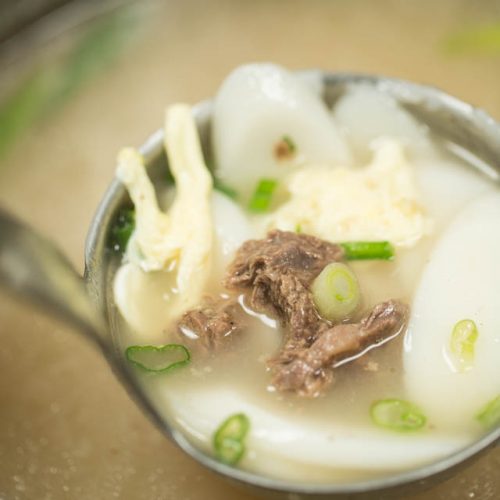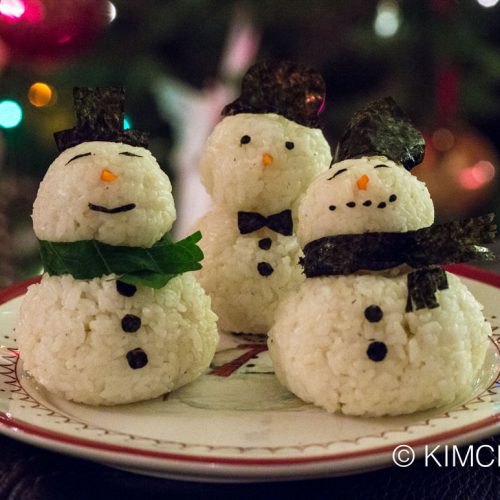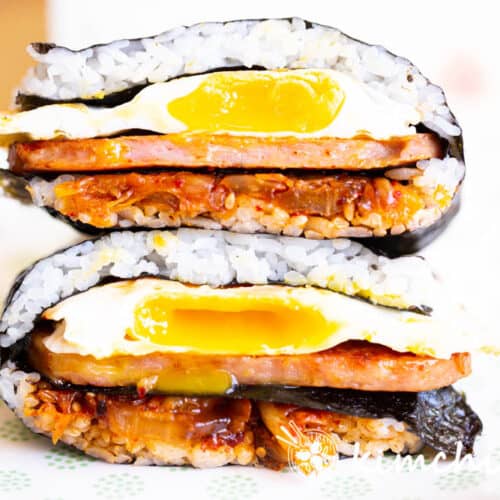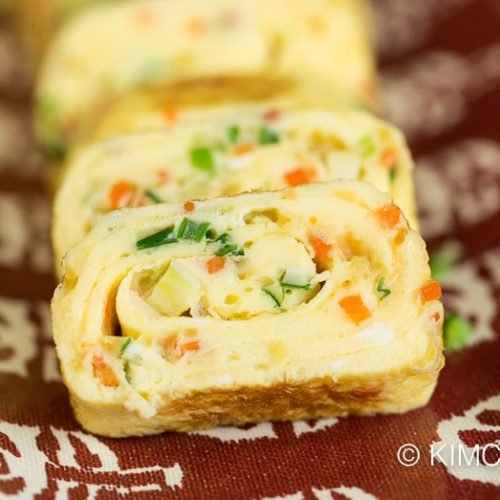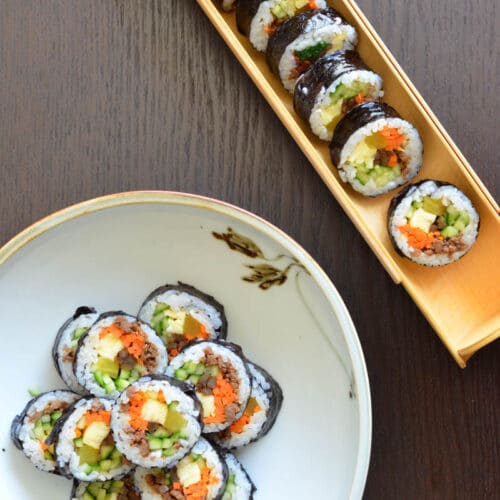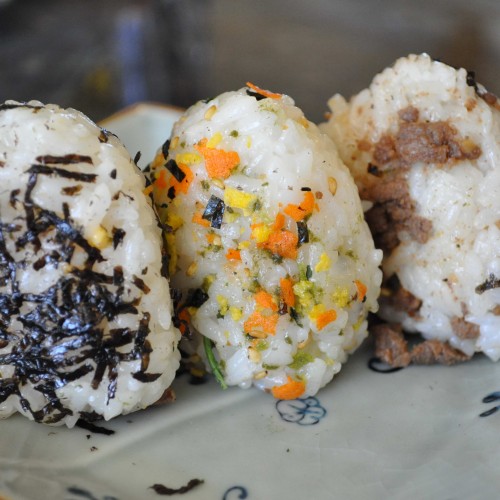What is Laver (Gim) ?
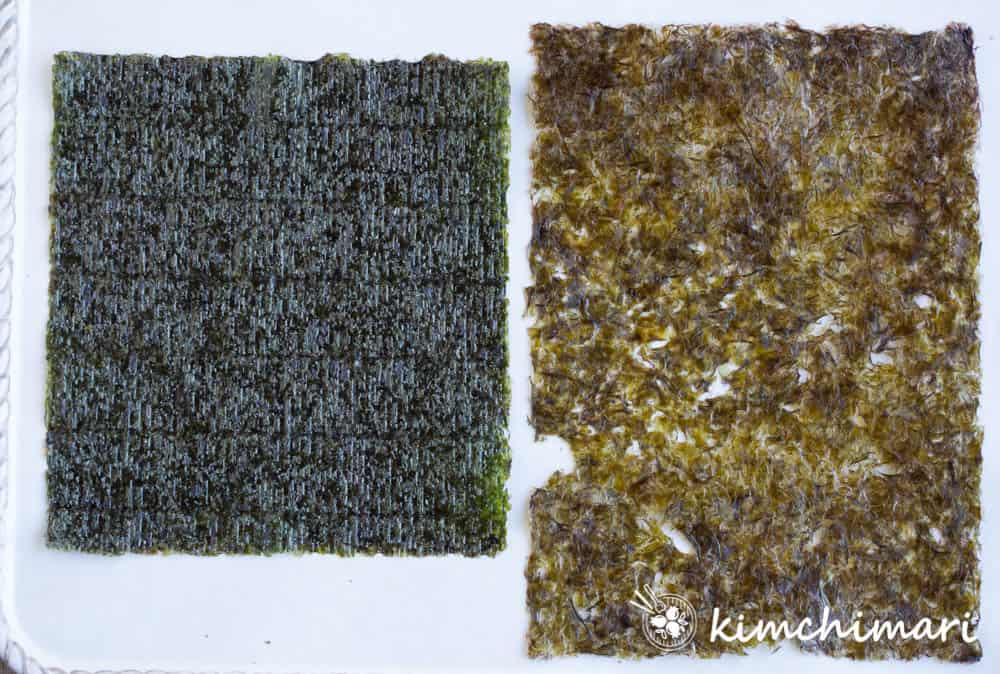
Laver (Gim or Kim 김) is probably one of the most important Korean food. Roasted Gim is one of the most popular side dish on the table. Laver (Gim) is a papery thin sheet of edible seaweed that dates back to the Korean Goryeo era, between 57 BCE to 668 CE. Naturally growing seaweed that is used to make Gim cannot meet the high demand in Korea and worldwide, so it is often cultivated commercially.
Gim sheets are made pretty much similar to how paper is made. Seaweed (instead of wood) is chopped then spread out on a screen then dried until it comes off together as a single sheet.
In Korean cuisine, there are 2 different types of Gim:
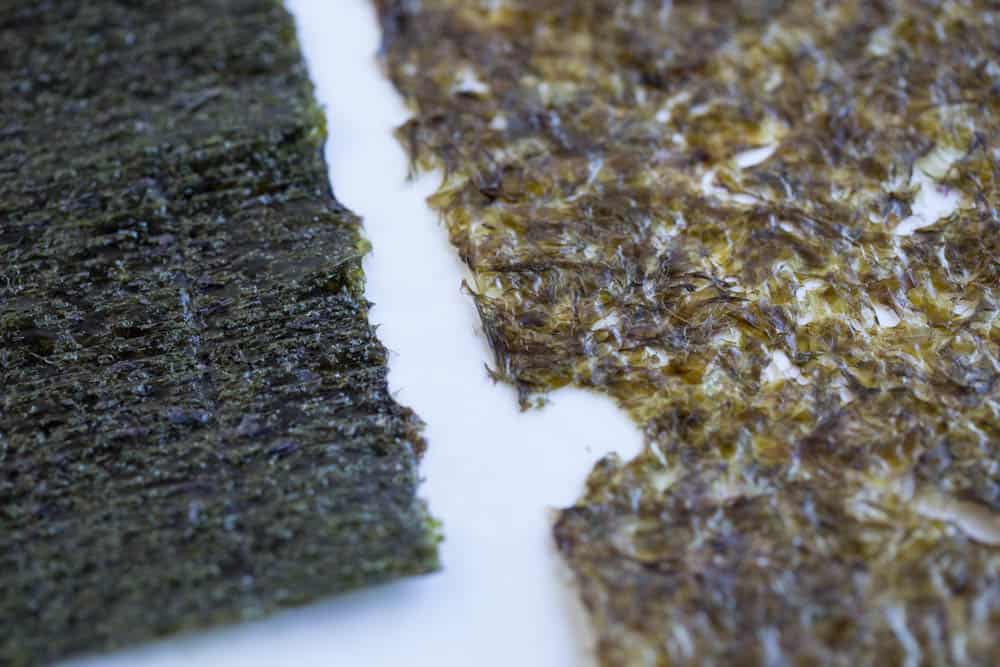
- Jaerae Gim (재래김) aka Joseon Gim (조선김) is a unique Korean style gim that's made by various seaweed but most importantly it is made very thin. If you put this up against the light, you will see a hint of light brown and green colors of the seaweed. The size of this Gim is also larger 7.5 in x 10.5 inches which is one easy way to differentiate it with the one that's used for Kimbap. This is the kind of Gim that's sold in many stores in US these days as Roasted Seaweed Snack.
- Kimbap Gim (김밥김) or Kimbap-Yong Gim (김밥용김) is gim used for making Korean seaweed rice rolls or Kimbap. This gim is made thicker and smaller with a size of about 7.5 in x 8.5 inches which will fit well with a Kimbap mat. When seen against a light, you will not see any light through it and will look totally black and solid. It is basically the same dried seaweed as the Japanese style Nori used for Sushi. Note, the one in the picture is pre-roasted so it has a bit of a green tint to it. Non-roasted Kimbap Gim will look more black.
Not To Be Confused With
Miyeok 미역 (brown seaweed or kelp). Dasima 다시마 (Kombu Kelp)
Where and What To Buy
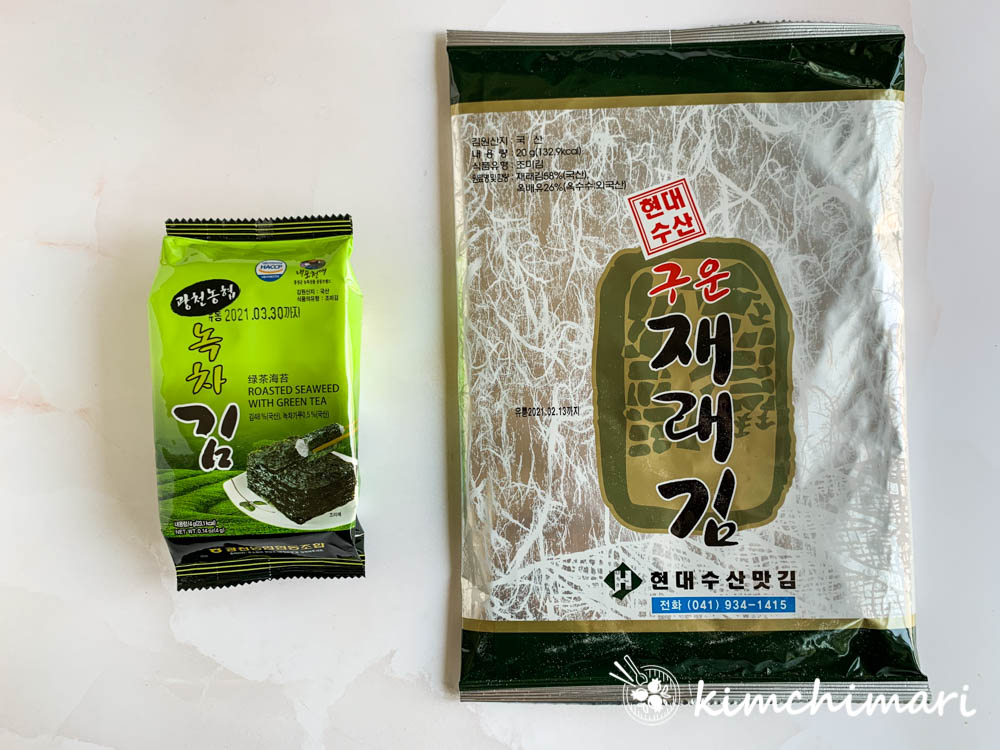
Korean and Asian grocery stores, some specialty grocery stores now sell the already seasoned and roasted Gim in small snack-size packs (like on the left in the pic). Koreans usually don't eat them as snacks actually but with rice.
The unroasted dried Jaerae Gim are only sold at Korean grocery stores but most Asian stores and many online stores like Amazon will sell the Kimbap Gim or Nori sheets. You can buy Nori sheets and make Kimbap.
When buying Gim, look for ones that don't look reddish as that is a sign that it was either not stored properly or is too old. Kimbap gim should look black and Jaerae Gim should look brownish in general but have specs of green. It should not have any tint of red.
Among Jaeare Gim, there are the following special kinds that are often sold at stores. The ones that don't say any of the following words, they should be the classic soft and smooth kind of Gim.
And these come in either already seasoned and roasted in tin foil-like packages (pic above) OR they can be bought un-roasted which then you will have to roast at home.
- Dol Gim 돌김 - is rougher and a little thicker. some say it has more flavor but some may not like the rougher texture
- Parae Gim 파래김 - has Ulva intestinalis (sea lettuce) mixed in with laver when they are dried. So it has a greener tint and has the extra flavor of the sea lettuce.
- Gopchang Gim 곱창김 - Gopchang Gim is gim made from the first harvest of the year which is known to have more intense flavor and also have a thicker and curly shape which is why it's called Gopchang = innards.
Among Kimbap Yong Gim (김밥용 김), there's going to be ones that are pre-roasted which are similar to Nori and should say 구운김 Gueun Gim (roasted). If it doesn't say Gueun Gim then it should be a non-roasted version which is still fine for making Kimbap.
How to Use/Cook
- Jaerae Gim is mostly roasted with some sesame or perilla oil and salt. This is what you will see now in the US that's sold as roasted seaweed Gim snacks. Koreans love having this and rice.
- Jaerae Gim is also often shredded or torn into little pieces and used as a garnish on soups like Tteokguk or Rice Bowls.
- Kimbap Gim of course is used to make mostly Kimbap but can be used to make Japanese Sushi like California roll. You can use pre-roasted/toasted Gim if you prefer but fine if you use non-roasted ones.
How to Clean/Store
Store in a sealed package or container in a cool, dry place away from direct sunlight but best to keep it frozen or refrigerated for longer storage.
Nutrition/Health Info
Seaweed in general is a great source of iodine that supports your thyroid gland. Thus, if you need to watch iodine levels in your diet, you may want to be careful about eating laver. Although, in general, laver has a much lower level of iodine when compared to Miyeok or Dasima (Kelp).
Laver also has vitamins and minerals such as vitamin K, B vitamins, zinc, iron and antioxidants. There's a study that claims Gim is a great source of Vitamin B-12 (see reference)
